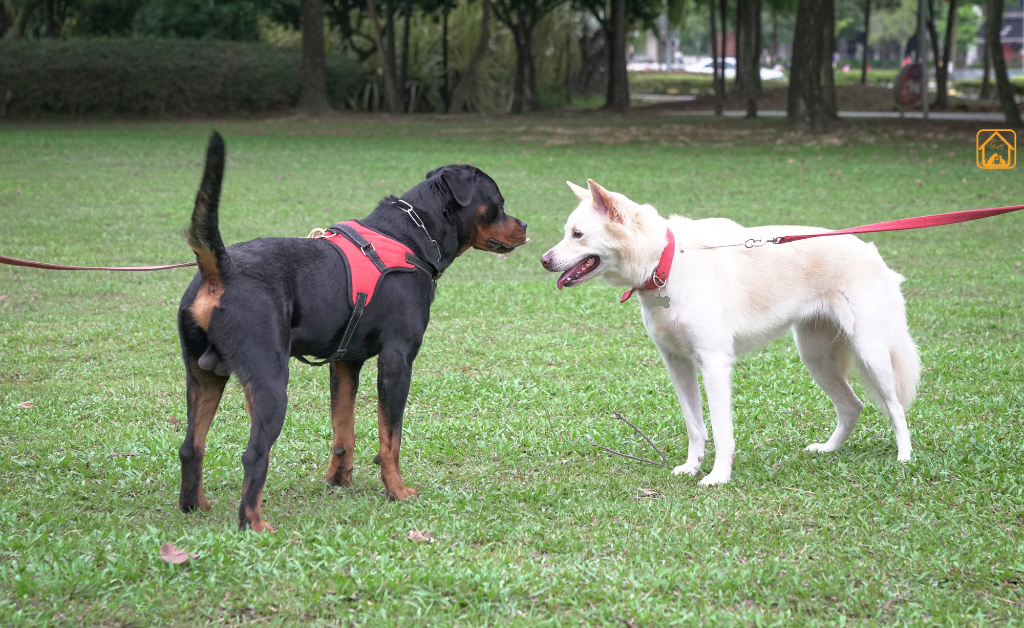Ever stood in a pet store staring at the wall of leashes, feeling a little lost? The dog harness vs collar debate is a big one for pet parents everywhere. Here’s the short version: collars fasten around your dog’s neck, while harnesses go around the chest and shoulders. Both can keep your dog safe and secure, but they work in very different ways.
Benefits and Disadvantages of Dog Collars
Collars have been the dog accessory go-to for generations. They’re easy to put on and take off, perfect for holding ID tags, and come in all sorts of styles. But, as with anything, there are trade-offs.
Pros of Dog Collars
- Simple, quick to fit, and widely available
- Hold vital ID tags and rabies info
- Great for dogs who walk calmly on leash
- Less bulky than harnesses, some dogs barely notice them
Cons of Dog Collars
- Can cause neck injuries if your dog pulls hard or lunges
- Not ideal for dogs with respiratory issues, small breeds, or those prone to tracheal collapse
- Some dogs can slip out, especially if their head is smaller than their neck (think Greyhounds or Whippets)
- Not recommended for leash training puppies or heavy pullers
Once my dog, Bunny found his way out from a loose collar on a squirrel chase. That moment with Bunny was a real wake-up call. Since then, I’ve made it a rule to always double-check the fit before heading out.
Benefits and Disadvantages of Dog Harnesses
Harnesses are getting more popular every year, and for good reason. They spread leash pressure over a larger area, which can mean a safer walk for many dogs. But are they perfect for everyone?
Advantages of Harnesses
- Reduce risk of neck and throat injury, especially for pullers
- Offer more control over large or strong dogs
- Can discourage pulling with front-clip or no-pull designs
- Great for small breeds, puppies, or dogs with delicate necks
Disadvantages of Dog Harnesses
- Some dogs dislike the feeling or bulk, takes getting used to
- Can be tricky to put on (especially squirmy pups!)
- Poorly fitted harnesses can cause chafing or escape opportunities
- May require more strength from the handler on big, energetic dogs
Honestly, my stubborn Labrador was a constant puller, walks felt more like tug-of-war. Everything changed when we switched to a front-clip harness. Total game-changer.
But then there’s my neighbor’s tiny Chihuahua, she can’t stand harnesses and feels more comfortable in a soft, lightweight collar. Truth is, every dog is different. What works for one might not work for another.
Harness vs Collar for Puppies: Which Is Better?
Puppies can be little bundles of unpredictable energy. When it comes to dog harness vs collar for puppies, harnesses are usually the safer and smarter pick, especially during leash training. A good harness takes pressure off your puppy’s soft, still-developing neck and spreads it across the chest and shoulders, keeping them protected if they suddenly lunge or pull.
That doesn’t mean collars are useless. They’re still great for holding ID tags or for quick trips outside. But for daily walks, exploring new smells, or learning leash manners, a well-fitted harness gives you more control and keeps your puppy safer. If you’ve ever watched a wobbly puppy run full-speed to the end of a leash, you’ll know why!
Choosing Between Harness and Collar for Small & Large Dogs
Size matters a lot. For tiny breeds and dogs with narrow necks, harnesses are usually safer and more comfortable. For big, strong dogs, harnesses can give you better control, but also require more of your own strength.
Small Dogs
- Benefit from harnesses to avoid neck strain
- Collars may be fine for calm, leash-trained pups
Large Dogs
- Harnesses help control pulling but need strong, secure fastenings
- Collars work for well-trained, gentle giants but watch for slipping or choking risk
I’ve seen a 5-pound Yorkie cough after a collar tug, while a Great Dane practically drags down in a harness. Sometimes, you need to try both and see what works best for your dog’s energy and your comfort.
Best Options for Dogs That Pull: Harness or Collar?
If your dog pulls like they’re late for a party, a harness, especially a front-clip or no-pull style, is usually the best choice. These designs redirect your dog’s momentum, making pulling less dangerous for their neck.
- Back-clip harnesses are comfy but may encourage pulling in some dogs
- Front-clip/no-pull harnesses give you more control and help with training
- Collars are not ideal for chronic pullers, as they can lead to neck injuries
Remember, even the best dog harness won’t fix pulling overnight. Training and consistency are key. But the right harness makes a world of difference, trust me, your arms and your dog’s neck will thank you.
Specialty Collars and Harnesses: Martingale, Choke, Prong & More
There’s so much unique dog gear out there, and martingale collars are one hidden gem. They’re perfect for dogs like greyhounds or sneaky pups who slip out of regular collars. These collars gently tighten just enough to keep your dog secure, without choking or hurting them. Smart, safe, and simple.
- Choke collars and prong collars: These tools can cause pain or injury if used incorrectly. Always consult a professional trainer before considering them.
- Head halters: Useful for very strong pullers, but require careful introduction and adjustment.
- Dog harness vs martingale collar: Harnesses are usually better for walking, martingales are a safer option than flat collars for escape artists.
For most families, a standard harness or flat/martingale collar is safest. Specialty tools should never be a shortcut for training or a replacement for good walking habits.
How to Fit and Use Collars and Harnesses Safely
Fit matters a lot. Whether you choose a collar or harness, make sure it’s not tight. For collars, you should be able to slide two fingers between your dog’s neck and the collar. For harnesses, check the chest straps and armpits for pinching or rubbing.
- Check fit every few months, especially for growing puppies
- Replace worn or damaged gear promptly
- Never leave a harness on unsupervised, as it can snag or chafe
I once found a raw spot under my dog’s leg after a summer hike, and it turns out his harness was rubbing. Lesson is to check your dog’s skin regularly, especially in hot weather or after long walks.
Training Tips: Harness vs Collar for Effective Dog Training
When it comes to training, both collars and harnesses have their place. For teaching polite leash walking, harnesses especially front-clip can set you up for success by preventing pulling and reducing distractions.
- Collars are useful for basic obedience or recall training
- Harnesses is best when working on loose-leash walking or with excitable dogs
- Always pair new gear with positive reinforcement, treats, praise, play
What’s better for training? It depends on your dog’s needs and your goals. I’ve had dogs who learn best with a harness, others who just needed a simple collar and lots of treats. Find what works, stick with it, and celebrate the wins, no matter how small.
FAQs: Dog Harness vs Collar
Is a harness better than a collar for a puppy?
For most puppies, yes. Harnesses prevent neck strain and give you more control during early training. Use a collar for ID tags, but walk with a harness.
What are the disadvantages of a dog harness?
Harnesses can be bulky, tricky to put on, and may cause chafing if not properly fitted. Some dogs dislike the feel. They can also require more effort for the handler, especially with big dogs.
Is it better for a dog to have a collar or harness?
It depends on your dog’s size, breed, and walking style. Collars are fine for calm, leash-trained dogs. Harnesses are safer for pullers, puppies, and dogs with neck problems.
What’s the best collar or harness for dogs that pull?
A front-clip no-pull harness is usually best for pullers. Avoid choke or prong collars unless guided by a professional trainer.
Are harnesses or collars better for small dogs?
Harnesses are usually safer for small breeds, as they protect fragile necks and give you more control.
What about martingale, choke, or prong collars?
Martingale collars are good for escape artists. Choke and prong collars carry injury risks and should only be used under expert supervision.
Can I use both a collar and a harness?
Absolutely. Many owners use a collar for ID tags and a harness for walks. Just make sure both fit well and are comfortable for your dog.
Conclusion
Still unsure about dog harness vs collar? You’re not alone! Every dog is unique. If you’re stuck, ask your vet or a certified trainer for advice tailored to your furry friend. The right choice is the one that keeps both you and your pup happy, healthy, and looking forward to your next adventure together.For more in-depth info, check out AKC’s guide to harnesses vs collars.



